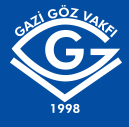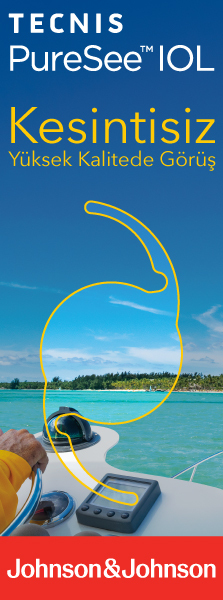Retina-Vitreous
2007 , Vol 15 , Num 2
Results of Photodynamic Therapy/Combination Therapy for Retinal Angiomatous Proliferation and Polypoidal Choroidal Vasculopathy in Age-Related Macular Degeneration
1Ankara Üniversitesi Tıp Fakültesi Göz Hastalıkları A.D., Ankara, Uzm. Dr.2Ankara Üniversitesi Tıp Fakültesi Göz Hastalıkları A.D., Ankara, Prof. Dr. Purpose: To evaluate the results of photodynamic therapy (PDT) or combination therapy (PDT+intravitreal antiangiogenic) for retinal angiomatous proliferation (RAP) and polypoidal choroidal vasculopathy (PCV) in patients with age related macular degeneration.
Materials and Methods: PDT or combination therapy(Bevacizumab/triamcinolone) was performed in eight eyes of 7 patients with RAP and three eyes of 3 patients with PCV. Visual acuity measurement (ETDRS), fluorescein and ICG angiography were performed before and after treatment. OCT was performed to evaluate anatomical results and need for retreatment. RAP lesions were staged according to OCT and angiography findings. Control examinations were performed on 1., 3. months and with 3-month intervals after then.
Results: Of eight eyes with RAP, 3 had stage 1, and 5 had stage 2 RAP. Three eyes with stage 1 received PDT and 5 eyes with stage 2 received combination therapy. During the follow-up, retreatment was decided according to persistence of PED or intra/subretinal edema detected by OCT. Visual acuity increased in four (%50), remained the same in one (%12.5) and decreased in three (%37.5) of the eight eyes with RAP. Normal foveal contour was achieved in 6 eyes with OCT, anatomical success was 75%. Two eyes showed progression to stage 3. PDT or combined therapy was performed in three eyes of 3 patients with PCV. Two eyes had peripapillary and macular, one eye had macular polypoidal lesion. After 1-16 months of follow-up, visual acuity improved in 2 eyes, and remained the same in one eye. Normal foveal contour was achieved in 2 eyes.
Conclusion: PDT or combination therapy was found to be beneficial in short-term in this small series of patients with RAP and PCV. Further studies are needed in large series with longer followup. OCT and ICG angiography are useful in the diagnosis, and especially OCT is necessary during the follow-up for the decision of retreatment. Keywords : Photodynamic therapy, combination therapy, retinal angiomatous proliferation, polypoidal choroidal vasculopathy





